The Big Questions
Research briefs and interviews from the School of Humanities
Spring 2024
By Amy C. Evans
Illustrations by Brian Taylor
Studies at Rice’s School of Humanities cross the globe, span millennia and invite students from all schools at Rice to engage, interpret, critique and debate the crucial issues facing the world today — skills that are key in cultivating a lifetime of engagement with the world as citizens and thought leaders.

A Q&A With Author Bryan Washington
Whether he’s writing about pecan tarts for The New York Times or queer spaces for The New Yorker, Bryan Washington, esteemed Houston author and professor of English at Rice, manages to confront readers with his uniquely imagined themes of love and loss, pleasure and pain. His first two books, “Lot” and “Memorial,” were deep explorations of those motifs, but as it turns out, they were only appetizers to be devoured before what could arguably be considered the main course: “Family Meal” (Penguin Random House, 2023).
Currently, Washington is not only juggling the release of his new book, teaching writing courses, and game-planning new projects but also working on another book. We talked to him about “Family Meal,” the evolution of his craft, and writing to feel a little less lonely.
Tell us how you like to talk about “Family Meal.”
That’s interesting because it’s changed. I have thought of it as a book about a group of friends who are trying to figure out what it means to be family. My book agent said she felt that “Memorial” was like a love story about family and “Family Meal” was more of a family story about love. And I feel like that is really useful for me, in terms of intellectualizing it and thinking through the different forms that love can take or the different forms that friendship can take and how, in some ways, platonic love can be the most important relationship that someone has in their life.
The characters are so true to life that it’s a difficult read, but also life-affirming. To see that in a work of fiction is a reminder that you’re not alone.
I’m really interested in fiction that makes me feel less lonely. That’s work that I gravitate toward. It’s not really a goal, I think, that one can reach for. I think, really, just being there, or just saying that this is an experience that can be had, is enough in a lot of ways. I think I’ve been really fortunate to write these narratives and have them meet, in some cases, people who say, “Okay, wow, I’ve experienced this” or “I am this person.”
I’ve felt that way about texts whose characters have absolutely nothing to do with me or my history or where I’ve been geographically. To see models or to see arcs that do feel as though they might be memories that you may have had, even if they have nothing to do with you, whether by time or place — I think that that’s a really cool thing. That’s one of the reasons that I’ve gravitated to writing fiction myself.

“Contemporary art is speaking on so many levels, and optical is probably only about 10%.” — Leslie Hewitt
For Leslie Hewitt, internationally acclaimed artist and associate professor of art, it’s the other 90% of our perceptive possibilities that she considers when creating her multimedia forms and installations.
Hewitt’s recent solo project in the Dia Bridgehampton museum is a perfect manifestation of her exploration of “points of encounter that we render invisible.” The site-specific installation featured sculptural forms, photography, sound and even metadata as visual material and was a two-year investment for Hewitt.
She is still “building works from that encounter,” including texts, collaborating with nonartists who are also interested in the concept of immaterial structures. Recently, she contributed an essay to the forthcoming Space and Heritage issue of Future Anterior, a peer-reviewed journal published by Columbia University’s Graduate School of Architecture, Planning and Preservation.

Brave New Worlds
In February, an extraordinary roster of scientists, researchers, scholars and artists gathered at Rice for the biennial De Lange Conference. Historian Luis Campos, who convened the event, says, “Everybody is concerned with the future of their health, the future of their society, the future of the climate that they live in, and the future of how their data is being used. This is a conference that weaves all those realms together with forms of artistic intervention and creative practice.”
“Awkward!”
English professor and department chair Alexander Regier has a monograph on awkwardness as an aesthetic and political category forthcoming from Oxford University Press. “My interest in the subject came from having to understand the wider cultural context in order to even get to awkwardness,” Regier explains.
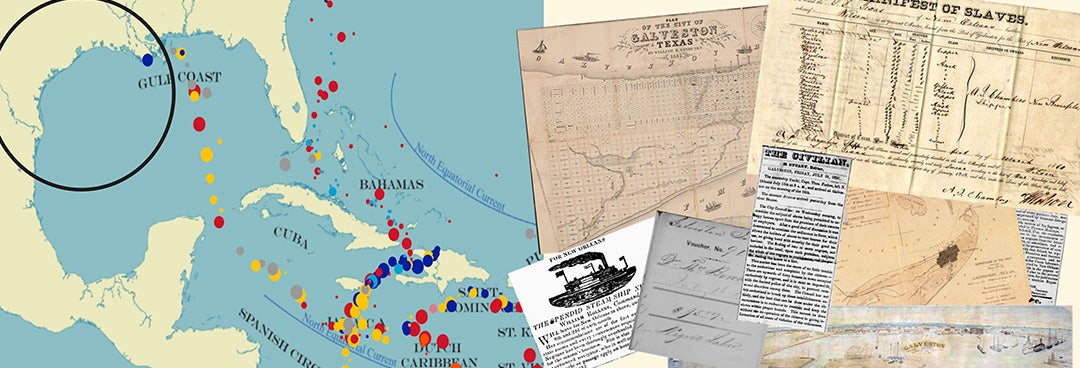
15,000: Number of records updated on SlaveVoyages.org
Professor of history Daniel Domingues da Silva continues to pour his energy into the SlaveVoyages.org project funded by the National Endowment of the Humanities and the UK Arts and Humanities Research Council. His team has “reconstructed the U.S. coastwise traffic to Texas, adding about 1,100 records of voyages and details on over 15,000 records of enslaved individuals transported in those voyages.” Rice has been selected to host the project for another three years.
Would you share an update on SlaveVoyages.org?
We are approaching the end of our first three-year term hosting SlaveVoyages here at Rice and have been selected to start a new three-year hosting term this summer. During this time, we reconstructed the U.S. coastwise traffic to Texas, adding about 1,100 records of voyages and details on over 15,000 records of enslaved individuals transported in those voyages. This research was carried out by Rice student researchers and made freely available to the public.
How has technology enhanced the way this scholarship is shared?
One piece of technology that I find exciting is the organization of the database as an inter-relational database. When folks access the Trans-Atlantic page or the Intra-American page, they usually think that they are accessing different databases on the same site, but that is not true. It is the same database, displayed in different ways, through different points of entry in a single website.
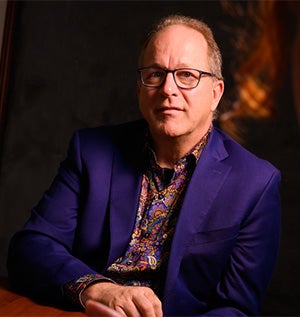
Thinking Impossibly
Religion scholar Jeffrey J. Kripal has convened two international conferences centered around Rice’s “Archives of the Impossible” — a collection of documents and materials related to the study of the paranormal — and has two books forthcoming: “How to Think Impossibly: About Souls, UFOs, Time, Belief, and Everything Else” (University of Chicago Press, 2024) and “Comparing Religions: The Study of Us That Changes Us” (Wiley-Blackwell, 2024).
What is “the impossible”?
We’re talking about well-documented paranormal phenomena. Many researchers who come to our archive hold the “extraterrestrial hypothesis” [that aliens are visiting us]. I want to support and nourish them, but, for me, [that hypothesis] does not really work. [The answer] is just way weirder than we can possibly imagine or think in our present terms and categories.
Why do we study the impossible?
Because it’s connected to everything, including physics and mathematics and biology and anthropology and literature.
How are Rice students using this archive?
I have a first-year doctoral student, Amanda Nedham, and she’s going to write [her dissertation based] entirely on drawings in the “Archives of the Impossible,” so there’s a Ph.D. that’s going to come right out of the archives.
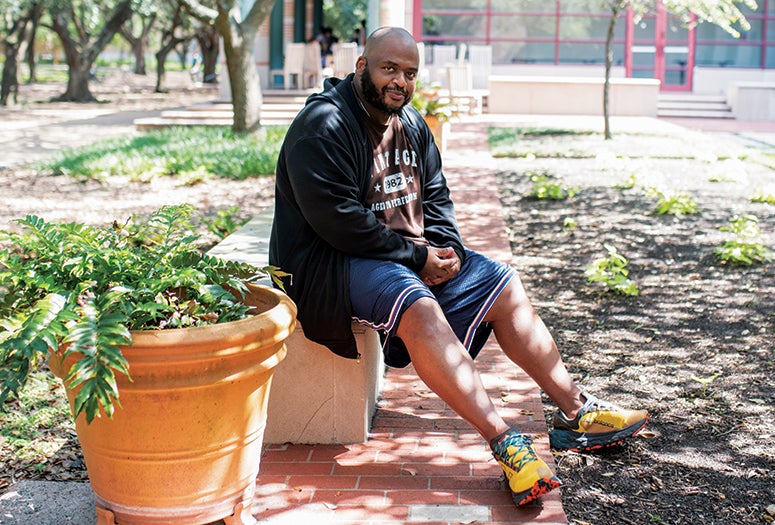
Writing and wandering
This spring, Kiese Laymon — celebrated novelist, essayist and professor of English — is teaching a course called Writing Longer Fiction. Lucky for students, he has invited fellow Black Southern writer Deesha Philyaw, author of “The Secret Lives of Church Ladies,” to work with his students as they transition from the short story to the novel. Outside the classroom, Laymon is writing a TV pilot for Amazon and publishing a children’s book, “City Summer, Country Summer” (Penguin Young Readers, 2024), the first of a string of books he’s writing for young people.
Other recent projects include contributing the introduction to “Thank You Please Come Again,” a book of photographs that document the food culture of Southern gas stations, and the foreword for a new edition of Alice Walker’s “The Color Purple.” Laymon has also finished another book for adults, but he’s holding onto it for now, explaining, “Because I did ‘Heavy,’ I can wander around a little bit more before I put out something else sort of personal back into the world.”
We talked to Laymon about writing for new audiences, roadside nourishment and how research shows up in his work.
Tell us about writing for children in “City Summer, Country Summer.”
I’ve always wanted to write books for young people. I think it was 2020, The New York Times asked me to write this sort of essay to complement these incredible photographs, all Black boys in New York City. Instead of just writing the traditional essay, I wrote kind of a short story about two boys from New York City coming to Forest, Mississippi. It was called “City Summer, Country Summer.”
And this incredible editor named Namrata [Tripathi, vice president and publisher of Kokila, an imprint of Penguin Young Readers] just was like, “We want to make that into a kid’s book.” This is the first one, and then there’ll be a few more coming after that. You know, even in all my adult work, it’s still childish. That’s a compliment, to me.
This book is all about these two boys playing in their grandmothers’ shared garden — and one kid comes down from New York and another kid comes from Jackson, and they meet in rural Mississippi. But, as you know, the kid coming from Jackson to South Mississippi, that’s still pretty far, spatially. But coming from New York to Mississippi is a whole different world.
Speaking of Mississippi, since you wrote the introduction for the book “Thank You Please Come Again,” there was a huge spread in The New York Times about it.
I know! And the article was solid. The book is really incredible. When they sent me [Kate Medley’s] photographs, it was similar to the process of writing the “City Summer, Country Summer” essay. I just saw that, and I was — actually, it’s one of the first pieces I wrote on my phone. I was in my car, and I opened the email, and I was like, “Oh, s---!” And then it took me back to growing up with my grandmama and really not even knowing that those restaurants were gas stations. Because I didn’t have a car, the gas part of it didn’t mean anything. The part that meant everything was the fried part and the cold part and watching my grandmama and her boyfriend walking together and getting in the back of the pickup truck.
Would you share more on your process and how research shows up in your work?
I love that question because my mother is a political scientist. She’s a researcher; she lived in archives. So I’ve always been comfortable doing research, watching people do research, reading so-called complex literary analysis or political things. But in art, I want that s--- not to show up. Even with “Heavy,” I had to interview all those people. And then I had to make it seem like I didn’t interview all those people. You want people to get lost in the scene. So I’m always doing research. And I tell my fiction students, I don’t care what short story you’re writing and, actually, I don’t care what kind of poem you’re writing, you should have to do some research.
One of the projects I’m working on is a television project based in Kentucky. I had to drive to Kentucky and live in Kentucky and interview a lot of people in Kentucky, and I had to read so many different papers about Appalachian art and “Affrilachians.” Crystal Wilkinson has been so important helping me because she’s a Black woman born in Indian Creek, Kentucky, who not only has a gazillion books that are so f---ing dope, but talking to her, you learn so much about that place that you didn’t know before.
So I’m just someone who believes the research is part of what we do; it’s part and parcel of the project. But it’s like what Toni Morrison says sometimes: The language shouldn’t sweat. I want people to know that there’s some sort of s--- undergirding it and, obviously, cite the people who influenced the art, but I also want people to lose themselves in the art.
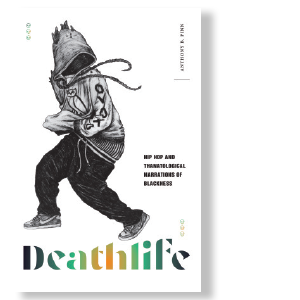
Religion and hip hop
Religion and humanities scholar Anthony Pinn released a new book in January: “Deathlife: Hip Hop and Thanatological Narrations of Blackness” (Duke University Press, 2024). Currently, Pinn is working with local artist Lanecia A. Rouse to explore the growing community of people who understand themselves as spiritual but not religious. “The arts allow for a different set of questions, a different type of engagement with imagination, that’s somewhat rebellious,” he explains, “and I think that’s helpful for us all.”
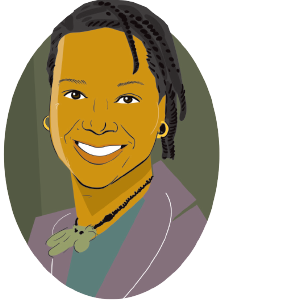
“It’s always about community.”
In 2020, French studies scholar Jacqueline Couti hosted an international conference at Rice: “Black Feminism in French (Post)Imperial Contexts.” Last year, she brought much of that work, plus new scholarship, to the August 2023 special issue of the Journal of Women’s History as guest editor. “How do you find your place in space?” she asks. “You can write. If you have your body, you can make music or movements with your body. Or you can tell stories. But it’s always about community.”
NOW READING
“Mothercoin”
Elizabeth Cummins-Muñoz
Beacon Press, 2022
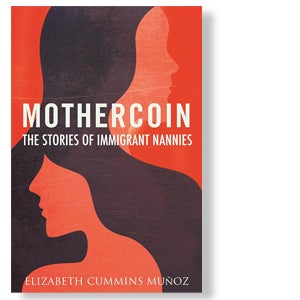
Mothering for money sounds like an inherent contradiction. As Elizabeth Cummins-Muñoz writes in “Mothercoin,” it flies in the face of our cultural ideal of motherhood as a labor of love driven by emotion, not economics. But childrearing is work, after all, and work can be outsourced by those with the means to do so, often to immigrant nannies from developing countries who leave behind families of their own in order to provide for them financially. The cost for many, as Cummins-Muñoz recounts, is hardship and heartbreak, injustice and inequality.
While researching the book, Cummins-Muñoz, a lecturer in Rice’s Program in Writing and Communication, spent more than a decade interviewing Mexican and Central American women who came to Houston to raise other people’s children. She met many of them at a local playground where she often brought her own children. Moved by the stories the nannies told, Cummins-Muñoz found that their experiences illuminated larger truths about immigration, globalization and the feminization of domestic work.
“Despite the women’s individual differences, the stories they tell reveal common themes. All must choose among limited options and carry the burden of choice alone,” she writes. “As they live out the consequence of their choices, they all encounter the public lessons that dark-skinned women learn about whose needs come first and that immigrants learn about the power of status to deny basic humanity.” — Jennifer Latson
